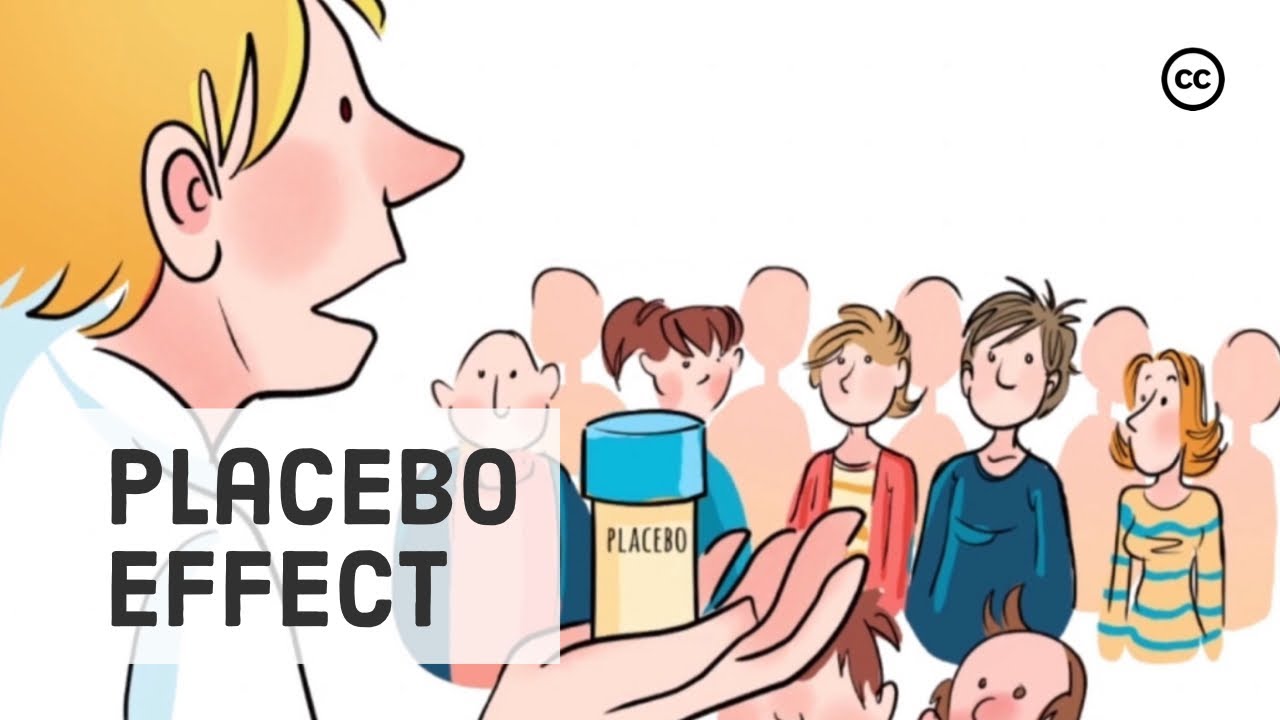A placebo is a treatment with zero therapeutic value but magical healing power. Common placebos include sugar pills inert saline injections, other procedures and surgeries that are completely fake. Placebos are especially effective to treat pain, chronic stress related diseases, like insomnia, and forms of depression. What most don’t realize is that while placebos are fake the placebo effect does it’s magic even if you get real treatments from a normal doctor. Placebos tend to follow one simple rule: the more ritualized and extreme the fake treatment the more effective their effect.
In short, sugar pills work well, sham surgery works wonders. Since standard doctor appointments are often highly ritualized the placebo effect is part of the cure we think we receive. To understand this better let’s look at Mr. and Mrs. Martin who both suffer chronic back pain.
Mr. Martin feels the pain first and he decides to go see a doctor who diagnoses osteoporosis and treats him with physiotherapy. After a few days of treatment, Mr. Martin feels better. He starts to track the progress of his pain.
He soon learns that he always goes to the doctor on the days when the pain is the worst and always feels better soon after. He becomes a big advocate for physiotherapy and recommends it to his wife and she joins him.
But do we really know that the therapy works? Despite months of therapy things get worse for both Mr. and Mrs.
Martin. Together they go to the hospital where Mr. Martin’s doctor prescribes painkillers. Mrs. Martin decides to get a second opinion.
Her new doctor has recently learned that for some chronic pain placebos work equally well. Instead of giving Mrs. Martin painkillers the doctor prescribes simple sugar pills though he tells Mrs. Martin that they are pain killers. The next day they both feel much better.
Mr. Martin notices that he has no problem sawing wood and Mrs. Martin can easily put on her shoes. She can confirm that the painkillers work but do they really? Unfortunately, it doesn’t take long before the pain comes back and they return to the hospital.
Mr. Martin is now treated with vertebroplasty, a popular treatment offered to people who suffer from back pain due to osteoporosis.
To administer it the doctors inject cement directly into his vertebrae, the bones that form the spinal column. Mrs. Martin’s doctor simply has her smell a container full of cement and then administers a saline injection, which does nothing.
Her doctor learned about this placebo from research published in the U.S. National Library of Medicine. It showed that a large randomized controlled trial found no benefit of vertebroplasty over a sham procedure. Right after the surgery the Martin’s meet in the lobby and share their experience of the process: both feel great!
Mrs. Martin invites her husband for ice cream as her treatment was so much cheaper.
So what’s happening here? There are a couple of theories that try to explain the placebo effect. First there is regression to the mean: Mr.
Martin like most of us thinks about treatment when his symptoms are particularly bad. He goes to see a doctor and soon after feels better. If we look at the natural course of many illnesses we understand that pain, over time, comes and goes in swings and usually regresses to the mean. We don’t know if the doctor or placebo had anything to do with the improvement. Then there is classical conditioning: most treatments, including vertebroplasty, are delivered in a context of rituals that include social signals, physical cues, and verbal suggestions.
Mr. Martin’s brain interprets such cues and elicits expectations memories and emotions, it releases endorphins and other chemicals that make him feel good and lower his perception of pain. So it becomes a self-fulfilling prophecy where a belief that he feels better leads him to feel better.

And there is confirmation bias: as soon as Mrs. Martin takes the sugar pill she thinks she will feel better.
Then she focuses only on the things that confirm that she is better. She doesn’t realize that she still has trouble doing many other things. While all three ideas probably work together there is another theory: so-called mirror neurons might also play a role. A new and growing body of evidence points at brain cells that mirror behavior. The cells fire when one acts and when one observes the same action performed by another.
As Mrs. Martin talks to the doctor parts of the doctors brain will mirror parts of her brain and parts of her brain will mirror his, as a result, the structure of her brain changes and she feels less pain. The neurophysiologist Giacomo Rizzolatti who discovered mirror neurons suggests that this process bypasses consciousness and provides a direct mapping of sensory information onto motor structures.
Placebo, a Latin word that means “I will please”, have been used for thousands of years. Placebo effects have been discussed for centuries.
An influential study from 1955 by Henry Kay Beecher, Harvard, titled: the powerful placebo established the idea that the effect is clinically important. Today the placebo effect is well recognized and scientifically so significant that any new pain medication that seeks Food and Drug Administration approval in the United States needs to show that it works better than a placebo treatment. In so-called randomized controlled trials, the gold standard of medical research, one group of patients is given the new medication while a control group receives a placebo. Neither the doctors who hand out the medication nor the patients know who gets what. Once the trial is over results are compared.
If the new medication works significantly better than the placebo it’s allowed to be sold. The trial is surprisingly difficult from 10 new drugs entering the test one gets approval. If a placebo study proves that an existing standard medical procedure is ineffective, like in the case of vertebroplasty, competent doctors stop prescribing it and we can speak of medical reversal. To find out if an existing treatment works or if it’s healing power is just the result of the placebo effect we can administer treatment without the knowledge of the patients.
In one such experiment it was shown that if a painkiller is administered by a hidden robot pump, patients demanded twice the dose compared to when the drug is injected by a nurse.
This would suggest that if a patient is completely unaware that treatment is being given, the treatment is just half as effective. The placebo effect counts for the other half. Honest placebo studies go even further. Because deception is ethically questionable researchers have now started to do clinical trials in which people are told that all they get is a sugar pill with placebo printed all over the packaging.
And even then the placebo effect does it’s magic and helps you feel better.
One experiment at the Harvard Medical School showed that people suffering from irritable bowel syndrome who were taking the honest placebo doubled their rate of improvement compared to the control group. What do you think? How can we make sure that the medicine we are prescribing is not only effective thanks to the placebo effect? Will more placebo research reveal that many standard medical treatments offered in some of the best hospitals around the world are shams? And how can we research the power of placeboes ourselves, at home, without putting anyone in danger?
If you like this video and the way we explain the subject subscribe to our channel! We try to explain complex subjects and simple language and cartoons to support students all around the world in their learning.
If you want to support us you can go to www.patreon.com/sprouts and donate.
Just $1 from many fans makes a big difference. .
Read More: Hydroxychloroquine and azithromycin for the treatment of COVID-19–Review of study by Didier Raoult
